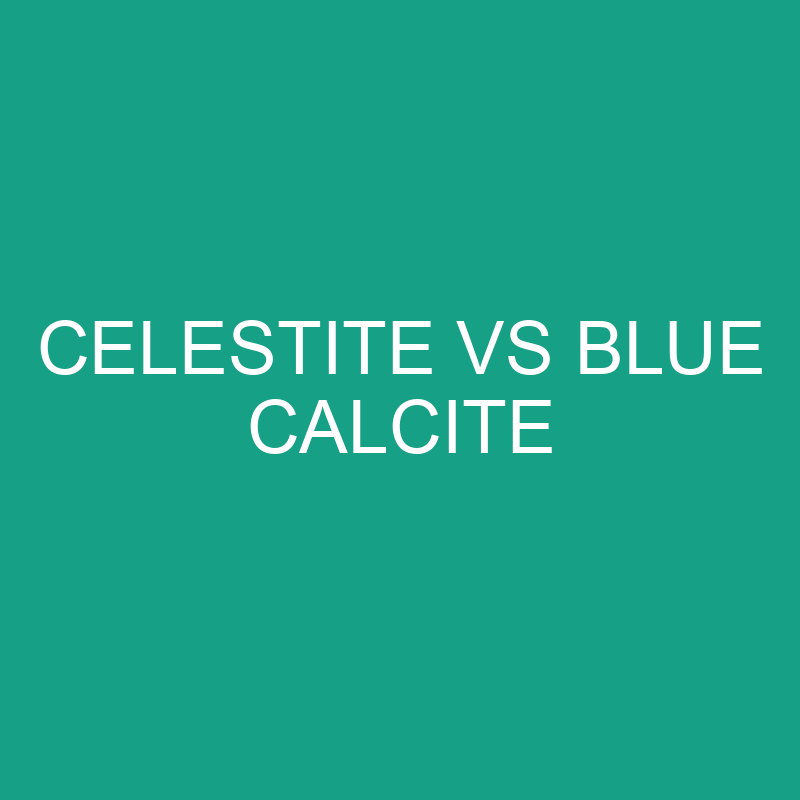Celestite and Blue Calcite are two captivating gemstones known for their soothing blue hues. While they share a similar color palette, each gemstone has distinct properties in terms of origin, physical characteristics, and metaphysical attributes. In this exploration, we’ll dive into the unique qualities of Celestite and Blue Calcite.
Post Contents
Origins and Geological Background:
Celestite:
- Composition: Celestite, also known as celestine, is a strontium sulfate mineral. It is often found in sedimentary rocks, formed through the evaporation of marine solutions.
- Color: Celestite comes in various shades of blue, ranging from pale to deep blue. It can also exhibit white, yellow, or orange hues.
Blue Calcite:
- Composition: Blue Calcite is a calcium carbonate mineral. It is usually found in sedimentary rocks and forms through the alteration of other minerals.
- Color: As the name suggests, Blue Calcite is characterized by its light to medium blue color. It can sometimes display streaks or patches of white.
Physical Properties:
Celestite:
- Color: Various shades of blue.
- Transparency: Typically transparent to translucent.
- Crystal Structure: Celestite has an orthorhombic crystal structure.
- Luster: Vitreous to pearly.
- Mohs Scale: Celestite has a relatively low hardness of 3 to 3.5.
Blue Calcite:
- Color: Light to medium blue.
- Transparency: Transparent to translucent.
- Crystal Structure: Blue Calcite has a trigonal crystal structure.
- Luster: Vitreous to resinous.
- Mohs Scale: Blue Calcite has a higher hardness of 3.
Metaphysical Properties:
Celestite:
- Connection to Higher Realms: Celestite is associated with spiritual development, enlightenment, and communication with higher realms. It is believed to promote inner peace and serenity.
- Throat Chakra: Celestite is often linked to the throat chakra, aiding in clear communication.
Blue Calcite:
- Calmness and Communication: Blue Calcite is known for its calming energy, helping to soothe frayed nerves and reduce anxiety. It is associated with clear communication and expression.
- Throat and Third Eye Chakras: Blue Calcite is often associated with the throat and third eye chakras, enhancing communication and intuition.
Uses in Jewelry and Spiritual Practices:
Celestite:
- Celestite is used in jewelry, particularly for pendants and earrings. However, its use is somewhat limited due to its relatively low hardness.
- In spiritual practices, Celestite is highly valued for meditation and energy work. Its calming energy is believed to facilitate communication with higher realms.
Blue Calcite:
- Blue Calcite is used in jewelry, often fashioned into beads, cabochons, or carved into various shapes.
- In spiritual practices, Blue Calcite is employed for its calming and soothing properties. It is often placed on the body during meditation or energy healing sessions.
Conclusion:
Celestite and Blue Calcite, both adorned in serene shades of blue, offer unique qualities to those who appreciate their aesthetic and metaphysical attributes. Celestite, with its association with higher realms and spiritual communication, radiates a celestial energy. Blue Calcite, with its calming and communicative properties, brings a sense of tranquility.
The choice between Celestite and Blue Calcite often depends on personal preferences, including the desired metaphysical qualities and the intended use in jewelry or spiritual practices. Whether adorning oneself with a Celestite pendant or incorporating Blue Calcite into meditation sessions, these gemstones serve as reminders of the serene beauty found in the mineral kingdom.
